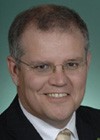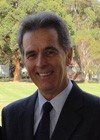Electoral Form Guide: Cook
Electorate: Cook
Margin: Liberal 6.3%
Location: Southern Sydney, New South Wales
In a nutshell: Safe Liberal seat in southern Sydney where Scott Morrison succeeded Bruce Baird in 2007, quickly establishing himself as a rising star since.
The candidates
|
|
GRAEME STRANG
|
|
|
Electorate analysis: Cook covers southern Sydney suburbs to the south of the Georges River, including Kurnell, Cronulla, Miranda and Sylvania. There has been little geographical change to the seat since its creation in 1996, but its character has transformed from marginal mortgage belt to high-income and safe Liberal. The inaugural member was Stephen Mutch, who had been a member of the state upper house since 1988. Mutch fell victim after one term to an exercise of power by the party’s moderate faction, which at first backed local barrister Mark Speakman, who had been best man at Mutch’s wedding nine years earlier. The resulting dispute ended with the installation of another moderate faction identity, Bruce Baird, who had been a senior minister through the Greiner-Fahey NSW government from 1988 to 1995. Mutch’s demise greatly displeased the Prime Minister, who pointedly failed to promote Baird at any point in his nine years in Canberra. It also did not help that Baird was close to Peter Costello, and was spoken of as his potential deputy when fanciful leadership speculation emerged in early 2001. After reports that growing Right control of local branches was putting his preselection in jeopardy, the 65-year-old Baird announced in April he would not seek another term.
Even before Baird announced his retirement there was talk he would be succeeded by Scott Morrison, former state party director and managing director of Tourism Australia. According to Steve Lewis in The Australian, Morrison boasted “glowing references from a who’s who of Liberal luminaries, including Defence Minister Brendan Nelson, Environment Minister Malcolm Turnbull, former Liberal president Shane Stone, Howard’s long-time chief of staff Arthur Sinodinos, and Nick Minchin, the Finance Minister and another close ally of Howard”. However, it quickly became clear that such support would not avail him without the backing of the Right. Unfortunately for Morrison, much of the Right’s local strength was achieved by courting local numbers man Michael Towke, who was himself intent on running. Imre Salusinsky of The Australian reported that Morrison was further starved of support when the Left resolved to resist Towke by digging in behind its own candidate, Optus executive Paul Fletcher, now the member for Bradfield.
Towke went on to defeat Fletcher in the final round by 82 votes to 70, with Morrison finishing well back in a field that included several other well-credentialled candidates. Towke’s success enraged opponents of the Right’s growing ascendancy, and there was talk of a whispering campaign surrounding Towke’s Lebanese heritage (his surname is a recently adopted Anglicisiation of Taouk) and how it would play in the electorate that played host to the 2005 Cronulla riots. Allegations of wide-ranging branch-stacking activities soon filled the media, as did reports of extravagant claims in his CV concerning his barely-existent security business. The party’s state executive narrowly passed a resolution to remove him, and a new preselection was held involving representatives of local branches and the state executive, which delivered victory to Scott Morrison. Morrison has since emerged as a senior figure in the opposition, entering shadow cabinet in the immigration and citizenship portfolio after Tony Abbott became leader in December 2009.
Analysis written by William Bowe. Read Bowe’s blog, The Poll Bludger.



